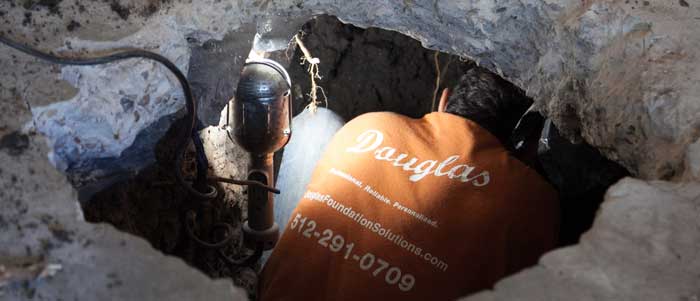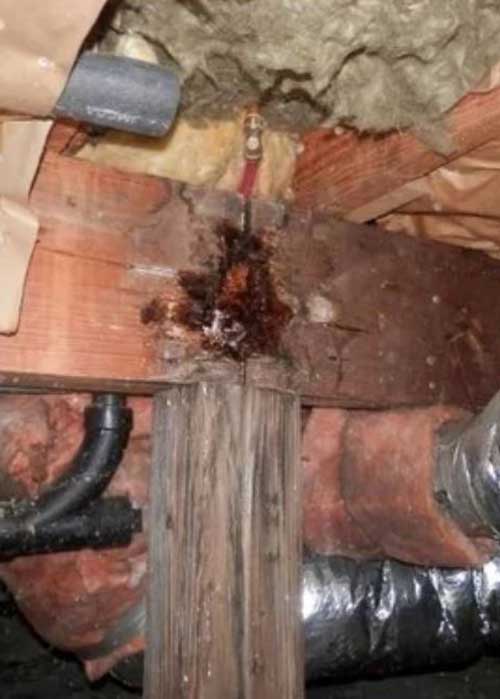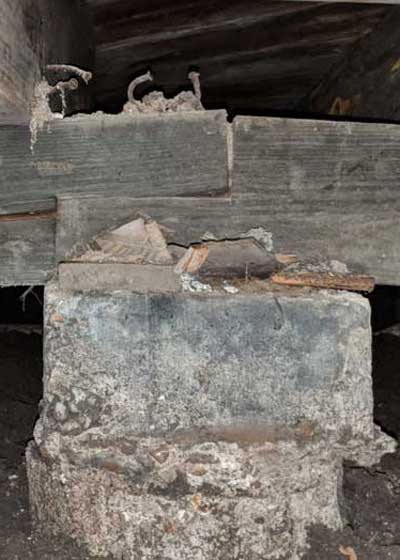512.291.0709
Mon - Fri: 9 AM - 11:30 AM
12:30 PM - 4 PM
September 24, 2021

Here in Austin, Texas, most of our homes and buildings are resting on expansive clay soil. That means that the soil is made up predominantly of clay, which expands and contracts in response to weather patterns. Long, dry summers make the clay dehydrate and tighten up, and the rains of winter and spring soak into the clay and increase its volume.
This can make the ground beneath a foundation very dynamic. Austin’s clay soil is prone to shifting and instability, which can seriously disrupt foundations of various types – even the pier and beam style that is most suitable for these conditions.
Below, we review some of the most common pier and beam foundation problems we see as a result of clay soil expansion cycles, and discuss their best remedies.
All that extra moisture that comes during the rainy season can create very humid conditions in the crawlspace between your home and the foundation piers. This presents significant risk to the wood structures that make up the beams and joists of your foundation.
Too much moisture can trigger the wood to rot and buckle, compromising the integrity of your foundation’s support system. You’ll see the same type of telltale sagging and cracks that appear when traditional slab foundations start to settle.
This problem can be remedied in two ways: 1. Replacing the affected wood components, with the likelihood that they will again begin to rot at some point in the future, or 2. Completely removing the wood-based support system and converting to more durable concrete.
If you have traditional concrete piers, you may be experiencing buckling in your jacking block. This is a common issue that arises due to both their structure and the surrounding soil. In classic constructions, two cap cylinders are placed atop the jacking block, not concentrically aligned with the pier.
This distributes too much of the load over only the jacking block, and not the supporting pier below. Combined with the stress of shifting soil, the jacking block can eventually slide and buckle under the strain.
At Douglas Foundation Repair, we use a proprietary concrete pier system that evenly distributes the load down into dual piers. Our system eliminates the need for a jacking block altogether, resulting in more stability for your pier and beam foundation.

Even with piers penetrating deep into the soil, constant expansion can cause piers to collapse and sink further into the ground. This can happen if the soil beneath and around the pier starts to give way, removing the support that kept the pier in place. Pier collapse can also occur in low-grade concrete piers when excess moisture has caused the pier to crack or crumble at some point.
While shims may be used as a temporary solution to collapses, they typically aren’t stable enough to count on for long. Shims are prone to slide and slant in response to further soil disturbances.
Installing new steel piers is the best way to stave off any moisture-caused degradation. In cases where the soil itself is too unstable, using helical piers can be ideal for penetrating and anchoring into load-bearing bedrock.
If you suspect problems with your pier and beam foundation, give us a call. Our team is ready to perform a thorough evaluation and prescribe the best solution. Based in Austin, we’ve helped hundreds of central Texas homeowners secure quick and dependable repairs that last.
